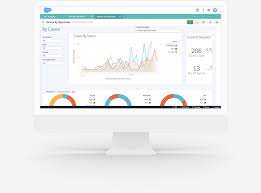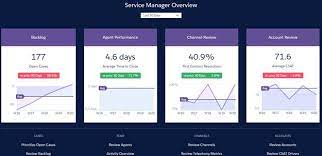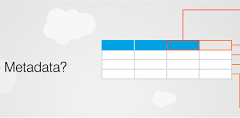Customer service analytics involves capturing and analyzing data from customer interactions to extract valuable insights, enhancing the overall customer experience. The customer behavior analytics aspect focuses on data derived from various touchpoints in customer relationships. In today’s complex customer journey, understanding and optimizing these interactions are more crucial than ever.
Envision dedicating just 10 minutes each morning, whether as a service manager reviewing critical Key Performance Indicators (KPIs) or as a service agent predicting customer churn probabilities and taking preventive measures. These scenarios vividly showcase the practical applications of modern customer service analytics.
On a daily basis, your contact center receives a plethora of customer inquiries, generating a substantial pool of data with the potential to drive business growth. The State of Service underscores that 94% of service leaders view real-time data as indispensable for meeting customer expectations, with a notable 60% increase in expectations observed during recent global events.
These statistics lead to a clear conclusion: Service teams leveraging customer service analytics as a catalyst for championing customer satisfaction are well-positioned to secure brand loyalty and more.
To harness these benefits, here’s what you need to know:
Make your service analytics smarter
Introducing Service Intelligence, an advanced analytics app for Service Cloud, empowering you with actionable insights and AI-driven recommendations for informed decision-making.
Understanding customer service analytics
Customer service analytics involves assessing data generated by service interactions, encompassing various sources like phone calls, emails, chats, social media, and customer surveys. This data falls into quantitative and qualitative categories, providing measurable facts and insights into sentiments, feedback, and customer preferences.
As businesses grow, customer service analytics distills this data into valuable information, revealing customer preferences, potential improvements, and opportunities for increased operational efficiency.
Salesforce’s analytics tool: Service Intelligence for Service Cloud
Overcoming the challenges of data analysis is crucial, as highlighted in the State of Data and Analytics report. While 96% of service leaders acknowledge the importance of trustworthy data during change, only 44% consider themselves highly data-driven. Salesforce’s Service Intelligence addresses this gap, helping you quickly make sense of all your data and gain trusted insights.
Service Intelligence encompasses various analytics types:
- Descriptive Analytics: Understand past customer interactions and patterns.
- Diagnostic Analytics: Identify reasons behind specific outcomes.
- Predictive Analytics: Use AI and machine learning to forecast future outcomes based on historical data.
- Prescriptive Analytics: Suggest actions to optimize outcomes in real time based on predictive insights.
Leveraging these analytics types allows you to optimize service operations, from understanding recent events with omni-channel analytics to forecasting staffing needs with predictive analytics.
Turn customer interactions into insights that help your business improve with service intelligence.
Every day, we generate 2.5 quintillion bytes of data (as recorded in 2020). Businesses use social media, algorithms, and other tools to organize this data, aiming to achieve their goals. Customer service analytics plays a crucial role in identifying patterns, understanding consumer behavior, increasing customer loyalty, and improving the overall customer experience.
Seventy-six percent of business leaders, according to a Forbes Insights Survey, believe that a company’s ability to satisfy its customers is essential to survival. Measurement is the first step in strategizing and improving Customer Experience (CX). Your brand can enhance customer experience and build enduring relationships by measuring and analyzing client data wisely.
AI and customer service analytics
AI powers many analytics functions by rapidly analyzing vast amounts of customer data, offering insights into behavior, preferences, and trends. To unleash AI’s potential, ensure your customer data is connected and unified. AI transforms clean, reliable data into intelligent predictions and recommendations, enhancing service quality.
AI’s ability to handle complex data aligns with future trends, as 68% of data professionals anticipate a significant increase in data volume in the next 12 months. Effective data management becomes crucial as data volumes surge.
Benefits of tracking customer service analytics
Customer service analytics offers several advantages:
- Improved Customer Experience: Understand customer expectations and experiences to tailor services effectively.
- Identifying Pain Points: Proactively address recurring issues from customer feedback, enhancing satisfaction.
- Operational Efficiency: Optimize processes, allocate resources efficiently, and improve overall operational effectiveness.
- Product and Service Improvement: Guide development based on customer insights to align with needs and preferences.
- Customer Retention and Loyalty: Design strategies fostering loyalty and improving retention rates.
What to measure for customer service analytics
While customer service analytics is broad, defining Key Performance Indicators (KPIs) is essential. Consider metrics such as Customer Satisfaction (CSAT), Net Promoter Score (NPS), Customer Effort Score (CES), Average Response Time (ART), Average Handle Time (AHT), First Contact Resolution, Case Deflection, Agent Case Volume, Customer Lifetime Value (CLV), Customer Retention Rate, and Sentiment Analysis.

Salesforce Customer Service Analytics Use Cases
Beyond individual teams, support conversation analysis has numerous use cases for customer experience research, CX enhancements, and time-saving procedures for the entire business. Common use cases include:
- Identifying Customer Pain Points: Pinpointing specific issues clients face, allowing proactive problem-solving.
- Boosting Support Performance: Utilizing big data to understand service levels and improve productivity.
- Measuring Agent Performance: Monitoring KPIs and comparing them to service level agreements for continuous improvement.
- Reducing Customer Service Costs: Data-driven decisions optimizing resource allocation and maximizing efficiency.
- Anticipating Customer Needs: Analyzing interactions to predict future behavior, improve retention, and identify upsell opportunities.
- Integrating Customer Feedback Into Products & Services: Actively listening to consumers, incorporating feedback into product development.
- Improving Customer Retention and Loyalty: Understanding and addressing reasons for customer departure, proactively boosting retention.
Get started with customer service analytics
Follow these steps to harness the power of customer service analytics:
- Decide on KPIs: Choose metrics aligned with your goals.
- Explore Technology Solutions: Investigate analytics tools like Salesforce’s Service Intelligence for Service Cloud.
- Implement and Train: Roll out the chosen technology and train staff.
- Tackle Improvements: Address areas needing enhancement one at a time.
Customer service analytics, as a powerful tool, drives satisfaction and business success through data-driven decision-making. As 48% of customers admit to switching brands for better customer service, and 94% believe good service increases the likelihood of another purchase, prioritizing data-driven insights becomes crucial.
Start with Salesforce Customer Service Analytics to deliver fast, efficient service
Every customer interaction is full of data. Learn how to make sense of all that data to boost agent productivity, cut costs, and enhance customer satisfaction.
Tectonic is please to announce Salesforce Service Cloud Implementation Solutions.













